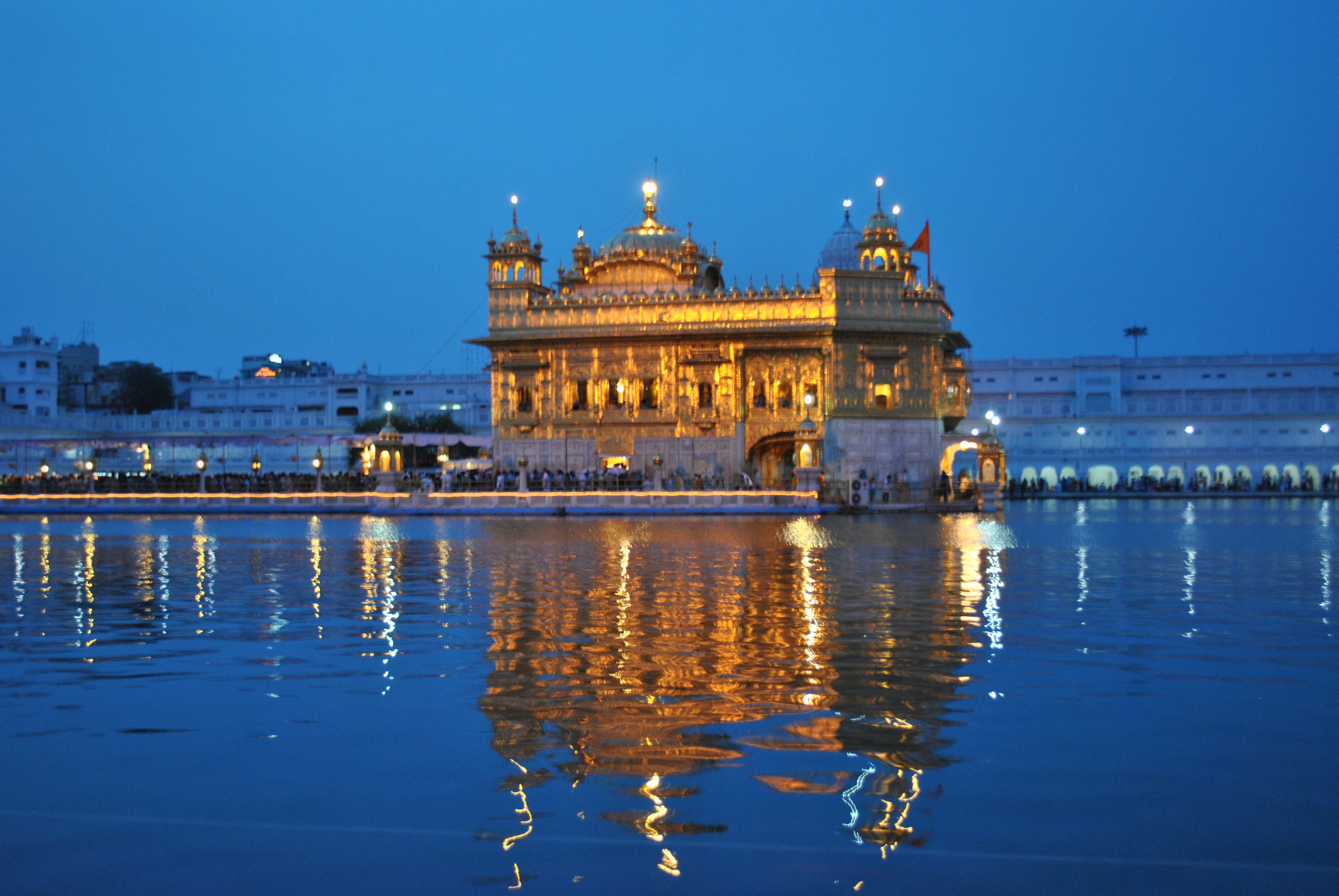Golden Temple of Amritsar
The Golden Temple in India, which is often called the “Darbar Sahib
or Harmandar Sahib” by the Indians, is one of the oldest places of
worship for the ‘Sikhs’ and is located in Amritsar, Punjab. It is
considered one of the holiest, blessed and sacrosanct places in India.
It is a symbol of both beauty and peace. The temple is surrounded by a
small man-made lake which has tons and tones of fishes in it. This lake
is supposed to have holy water. The temple can be entered from four
different sides and thus symbolizes openness, acceptance. This concept
is based on the old tents which were open from all four sides, welcoming
travelers from all directions.
 |
The Golden Temple has three holy trees. There is also a small Sikh
Museum near the Ghanta Ghar in Amritsar which is very rich in
information, especially for the first time visitors. The entire top of
the temple is made of pure gold and thus adds a lot of pride and beauty
to the entire temple.

During the earlier days, this place was a huge lake surrounded by a
thin line of forests. It is also said that Buddha journeyed to find out
the real meaning of life spent some considerable time in this place. The
first guru of the Sikh community called the Guru Nank also used to
meditate in this peaceful place and years after he passed away, many of
his disciples kept coming back to the site and then it finally became a
sacred place. It was during the Fifth Guru, Arjana when the Temple was
finally built 1604. It was Guru Arjan who installed the “Guru Granth
Sahib” in the temple and appointed the first reader in August 1604. The
temples architecture is that of both Hindu and Muslims. On many
occasions, it was destroyed by a certain set of community and rebuilt by
the Sikhs.
 |
No comments:
Post a Comment